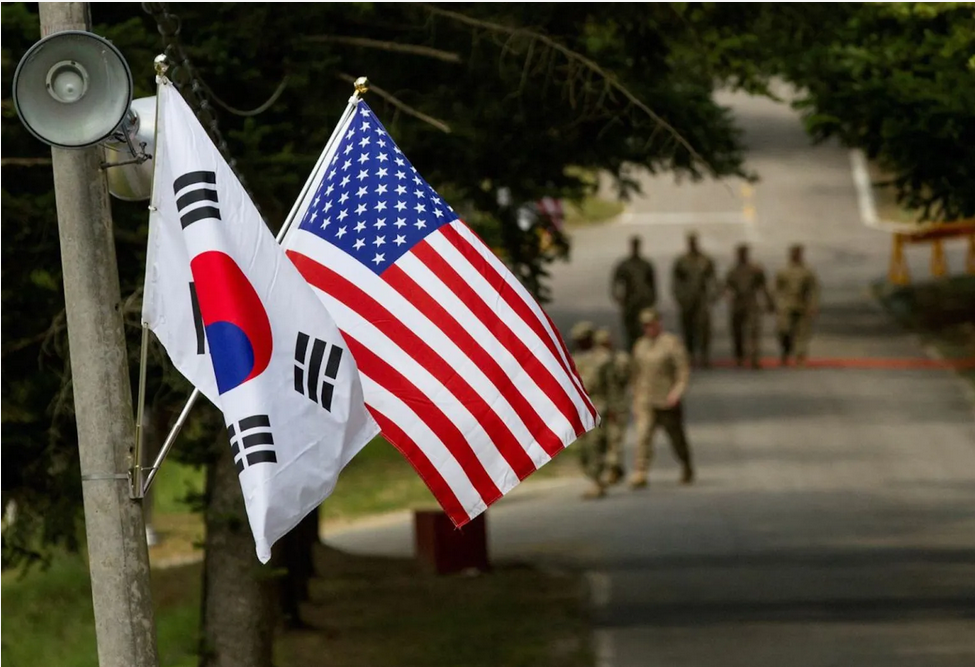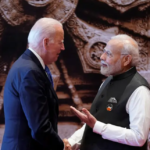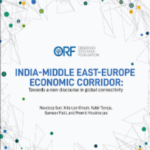
South Korea’s security cannot be separated from regional security and delaying discussion on how it fits in a Taiwan conflict is not an option
The Taiwan Strait is a region where China’s core interests sharply conflict with those of the United States. Previous crises in the Taiwan Strait have never been without danger, but ultimately US military power made China retreat.
The growing military power of China tells us the next Taiwan crisis will be different. The United States and its South Korean ally need to be fully aware of that and plan accordingly.
The US does not want a military conflict in Taiwan in the near future. China, having declared its goal to become a “fully developed, rich, and powerful” nation and a “superpower” by 2049, will also avoid unnecessary conflicts.
However, China’s perceived “window of opportunity” may differ from our calculations. Moreover, in a heightened military posture, the crisis can escalate at any time.
US preparations: strategy and posture
Whether the US has achieved the posture to deter China thus has become a crucial issue. The geography of Taiwan and the Indo-Pacific region, surrounded by sea and relatively distant for the US, poses a significant challenge.
As the crisis escalates, it can be divided into stages. In peacetime, military campaigning will prevent China from taking provocative actions or crossing the threshold. Especially as China attempts to freely use the gray zone, including cyber and space domains, maintaining superiority is essential for deterrence.
If the Chinese military can inflict significant damage or advance to Taiwan’s main island, benefits have to be denied and costs imposed.
Finally, should the conflict escalate, a counterstrike against China will proceed. While attacks on the Chinese mainland will be restrained, combined operations capable of paralyzing Chinese command and control can be executed.
Spatially, the concept of three lines is useful.
- Most critical is the “median line” of the Taiwan Strait, the final line to block China’s military advance, requiring significant assets.
- Next is the entry route for area of operations to defend Taiwan, emphasizing strategic logistics to quickly and safely deploy large forces from bases in the Indo-Pacific region.
- Lastly, setting a geographical limiting line against mainland China shows clear intent to prevent unnecessary escalation.
Taiwan and the US must review multiple options in advance. Although phased in terms of time and space, additional forces are needed to execute all stages of operations. Achieving regional air and maritime superiority requires:
- advanced real-time intelligence, surveillance and reconnaissance assets,
- fifth-generation fighters,
- long-range missile bombers,
- carrier strike groups composed of manned and unmanned maritime forces,
- ground forces with amphibious capabilities and firepower,
- missiles of various ranges,
- strategic and operational logistics, and
- resilient supply capabilities.
Most importantly, these forces must be deployed at the right time and place, requiring the US Indo-Pacific alliance network to operate as a robust system.
Coping with multiple crises at the same time
An Atlantic Council research report titled “The United States and its allies must be ready to deter a two-front war and nuclear attacks in East Asia” has expressed concerns about crises connecting the Korean Peninsula and Taiwan.
The Ukraine war has shown that such “strategic simultaneity” can occur even at a regional level. Geographical proximity is one reason in that case, but more crucial is competition for influence between the US and China, expansion of military projection capabilities including missiles, creating favorable situations through nuclear coercion, and active use of gray zone tactics.
A Taiwan crisis’s impact on the Korean Peninsula
Let’s present a few broader implications for the security of the Korean Peninsula from a military perspective:
- Korea is not prepared, despite being forewarned. Official consultations on the Taiwan crisis have not been conducted at the government level, leaving almost no discussion on what role Korea should or could play in a contingency.
- China and North Korea are connected by alliance treaty and possess nuclear weapons while Taiwan, South Korea and Japan can provide limited military support to the US and are not institutionally bonded. Dependence on the US for deterrence or response is inevitable.
- Operation of three US commands in a crisis could bring confusion. The US Strategic Command responsible for deterring and responding to nuclear-armed countries, the Indo-Pacific Command in charge of defending Taiwan, and US Forces Korea have clear distinctions in authority and responsibility. However, separating the Korean Theater of Operations from other regions is impossible, and how to connect and integrate the ROK Joint Chiefs of Staff, which leads military operations in peacetime, with the ROK-US Combined Forces Command, which controls operations in wartime, is unexplored.
- If a Taiwan crisis occurs, South Korea must protect approximately 6,000 expatriates in Taiwan, minimize the negative impact on the national economy by protecting sea lanes of communication and make diplomatic efforts to prevent unnecessary escalation. However, South Korea’s security cannot be separated from regional security. Delaying the discussion on what role South Korea will play during the Taiwan crisis is not an option. It should not be limited to supporting US military operations. Close dialogue within the alliance is essential.
- Focus should be on understanding what problems could arise under what situations and conditions. It is more important to accurately recognize the complex situation than to decide who should do what. Although a new crisis is a concern, the US and South Korea must resist the pressure to act immediately, must share problem-recognition as allies. First, accurately understand the intentions of China and North Korea and align perceptions among allies and partners.
- Options should be expanded and numerous scenarios developed. Fixing the maximum and minimum responses and converging to a middle ground, “the
- Combined military posture will be clearly affected, especially concerning redeployment elsewhere of USFK Air Force assets under the concept of “strategic flexibility.” An academic study analyzed that the Republic of Korea and the US would need approximately 500 fighters each to secure Seoul’s “vital national interests against North Korean military threats including nuclear weapons and ballistic missiles” in an all-out war If any of the 90 USFK fighters currently stationed
- in Korea are redeployed, it will be challenging to respond adequately to North Korea’s surprise attacks. While Korea cannot refuse the strategic flexibility of USFK, efforts are needed to jointly block North Korea from misjudging or exploiting vulnerabilities.
- Most critical is potential dispersion of the United States’ Asian allies-and-partners network’s capabilities, which should operate organically. US military power remains overwhelming, but geographical distance could delay decision-making and execution in a crisis. Japan’s military power cannot be immediately projected without the US, and South Korea’s military must fill the gap left by any US Forces Korea redeployed while deterring North Korea.
Recommendations for ROK-US alliance:
- If a Taiwan crisis occurs, South Korea must protect approximately 6,000 expatriates in Taiwan, minimize the negative impact on the national economy by protecting sea lanes of communication and make diplomatic efforts to prevent unnecessary escalation. However, South Korea’s security cannot be separated from regional security. Delaying the discussion on what role South Korea will play during the Taiwan crisis is not an option. It should not be limited to supporting US military operations. Close dialogue within the alliance is essential.
- Focus should be on understanding what problems could arise under what situations and conditions. It is more important to accurately recognize the complex situation than to decide who should do what. Although a new crisis is a concern, the US and South Korea must resist the pressure to act immediately, must share problem-recognition as allies. First, accurately understand the intentions of China and North Korea and align perceptions among allies and partners.
- Options should be expanded and numerous scenarios developed. Fixing the maximum and minimum responses and converging to a middle ground, “the Goldilocks choice,” traps us, leaving us unable to achieve asymmetric superiority. Creative options must be available in all spaces of time, place, and situation, including gray zones used by the opponent. From the perspective of “integrated deterrence,” the capabilities and means of allies and partners are even more diverse. Considering Korea’s sensitive relationship with China, more options may be derived through track 1.5/2 tabletop exercises.
- The most important goal of the ROK-US alliance is to block simultaneity. If adversaries’ goal is to weaken the US alliance network regionally, we must disrupt their simultaneity. Prevent their misjudgment and miscalculation and end the situation at an early stage and low level so a single crisis does not expand. Through psychological and cognitive warfare, plus other dimensions, separate the opponent to eliminate the risk factors caused by integration.
- There’s a persuasive argument for “Integrated Deterrence 2.0,” further deepening and combining the existing network centered on the US in the Indo-Pacific region.
- South Korea’s self-strengthening efforts should ultimately focus on taking responsibility for security on the Korean Peninsula. This is not about exceptionalism. It’s about playing a role in building a strong defense line connected to the US Indo-Pacific alliance network and integrated deterrence. This means South Korea takes full responsibility for one of the simultaneous threats from North Korea and China, and strengthens the capabilities of each of the three countries within ROK-US-Japan cooperation. If North Korea misjudges due to the nuclear imbalance on the Korean Peninsula, despite South Korea’s self-strengthening efforts, deploying US tactical nuclear weapons could be the simplest and most effective response.
Hanbyeol Sohn is an associate professor at the Korea National Defense University


